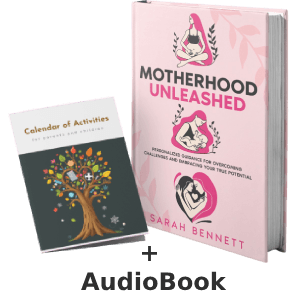Welcoming a newborn is one of life’s most magical moments, but it also comes with a whirlwind of questions—especially about feeding. How often should your baby eat? Is breast milk really “liquid gold,” or is formula just as good? This newborn feeding guide breaks down the essentials of breastfeeding a newborn and formula feeding, so you can feel informed, empowered, and ready to nourish your little one with love.
Feeding isn’t just about calories; it’s the foundation of your baby’s growth, immunity, and your early bonding experience. Whether you’re planning to breastfeed, pump, use formula, or mix methods, understanding the basics helps you navigate those sleepy 3 a.m. moments with confidence. Let’s dive into everything you need to know about baby nutrition and practical newborn tips.
Why Newborn Feeding Matters More Than You Think

In the first weeks of life, your baby’s stomach is tiny—about the size of a cherry at birth! Yet, they need frequent, nutrient-dense feedings to double their birth weight by around five months. The American Academy of Pediatrics (AAP) recommends exclusive breastfeeding for the first six months when possible, but acknowledges that formula feeding is a healthy alternative when breastfeeding isn’t feasible.
Real-world example: Sarah, a first-time mom, worried her milk “wasn’t enough” because her baby cluster-fed every hour one evening. A quick chat with her lactation consultant revealed this was normal “growth spurt” behavior—her body was ramping up supply to meet demand. Understanding feeding cues turned panic into patience.
Whether you choose breast or bottle, the goal is the same: a happy, growing baby and a confident parent.
Breastfeeding Newborn: Nature’s Perfect Start
Breastfeeding a newborn offers unmatched benefits, but it’s also a learned skill for both mom and baby. Colostrum—the thick, antibody-rich “first milk”—arrives in the first days, followed by mature milk around day three to five.
Key Benefits of Breast Milk
- Immunity boost: Contains live antibodies that protect against infections.
- Digestibility: Easier on tiny tummies than formula.
- Free & always ready: No midnight mixing required!
Getting Started with Breastfeeding
- Skin-to-skin contact right after birth triggers baby’s rooting reflex.
- Latch matters: Aim for a deep, asymmetrical latch (more areola below the nipple).
- Feed on demand: Newborns typically nurse 8–12 times in 24 hours.
Hypothetical scenario: Imagine little Emma fussing at 2 a.m. Instead of watching the clock, mom offers the breast. Emma nurses for 10 minutes, falls asleep, and repeats in 90 minutes. This “cluster feeding” is her way of signaling, “I’m growing—send more milk!”
Formula Feeding: A Reliable, Loving Choice
Formula feeding provides complete baby nutrition when breastfeeding isn’t possible or preferred. Modern formulas mimic breast milk’s nutrient profile, with added DHA for brain development and prebiotics for gut health.
Types of Formula
- Cow’s milk-based: Most common (e.g., Similac, Enfamil).
- Hydrolyzed: For sensitive tummies.
- Soy or specialty: For allergies (consult a pediatrician).
Bottle-Feeding Best Practices
- Hold baby semi-upright to reduce air swallowing.
- Use paced bottle-feeding: Tilt the bottle horizontally so baby controls flow.
- Never prop a bottle—supervision prevents choking.
Relatable example: Dad Mike takes the night shift with pre-measured formula bottles. By pacing feeds, he mimics breastfeeding rhythms, helping baby avoid overfeeding and spit-up.
Newborn Feeding Schedules: Finding Your Rhythm

Newborns don’t follow clocks—they follow hunger cues. Still, understanding typical patterns helps you plan.
| Age | Breastfeeding Frequency | Formula Amount per Feed | Total Daily Feeds |
|---|---|---|---|
| 0–1 week | Every 1–3 hours (8–12x) | 1–2 oz | 8–12 |
| 1–4 weeks | Every 2–3 hours (8–10x) | 2–3 oz | 8–10 |
| 1–3 months | Every 2–4 hours (7–8x) | 4–6 oz | 6–8 |
Note: Always watch for hunger cues (rooting, hand-to-mouth, fussing) over strict schedules.
Newborn tip: Keep a simple feeding log for the first week—note time, duration (or ounces), and wet/soiled diapers. Six wet diapers by day five signal adequate intake.
Signs Your Newborn Is Getting Enough
Worried about “enough”? Look for these reassurance signs:
- Steady weight gain (5–7 oz/week after the first week).
- Contentment after feeds.
- Regular stools (breastfed: mustard-yellow, seedy; formula: tan, firmer).
Example: At baby Leo’s two-week checkup, he’d regained birth weight plus an extra ounce. His mom beamed—those 3 a.m. nursing marathons paid off!
Combining Breast and Formula: The “Combo” Approach

Many parents mix methods successfully. A common scenario:
- Mom nurses during the day.
- Dad gives a formula bottle at night for longer sleep stretches.
- Pumping maintains supply.
Pro tip: Introduce one bottle of expressed milk or formula around 3–4 weeks (once breastfeeding is established) to avoid nipple confusion.
Common Breastfeeding Challenges & Solutions
Breastfeeding a newborn isn’t always intuitive. Here’s how to tackle hurdles:
1. Sore Nipples
- Cause: Shallow latch.
- Fix: Work with a lactation consultant; try lanolin cream between feeds.
2. Low Milk Supply Fears
- Reality: Most perceived low supply is actually normal newborn behavior.
- Boosters: Nurse frequently, stay hydrated, eat oatmeal or lactation cookies (fun morale boost!).
3. Engorgement
- Relief: Warm showers, gentle massage, cold cabbage leaves (yes, really!).
Myth bust: “Formula-fed babies sleep longer.” Actually, digestion speed varies—some breastfed babies sleep 5-hour stretches by 6 weeks.
Formula Feeding Myths & Facts
Myth: Formula causes obesity. Fact: Overfeeding (not formula itself) is the risk. Paced feeding prevents this.
Myth: You can’t bond while bottle-feeding. Fact: Skin-to-skin, eye contact, and gentle rocking create deep connections—breast or bottle.
Nutrition Deep Dive: What’s in Breast Milk vs. Formula?
Breast Milk (Dynamic)
- Proteins: Whey-dominant, easy to digest.
- Fats: Vary by maternal diet (eat salmon for DHA!).
- Carbs: Lactose + oligosaccharides (prebiotics).
Formula (Standardized)
- Proteins: Cow’s milk or hydrolyzed.
- Fats: Vegetable oils + DHA/ARA.
- Carbs: Lactose or corn syrup solids (in sensitive versions).
Both meet FDA nutrient standards. Breast milk adapts hourly; formula stays consistent.
Pumping & Storing: Flexibility for Breastfeeding Moms

Want to share feeds or build a stash?
- Pump after morning feeds (highest supply).
- Store: Refrigerator (4 days), freezer (6 months).
- Warm safely: Place bottle in warm water—never microwave.
Scenario: Working mom Jenna pumps twice at the office. Her partner uses thawed milk for evening bottles, keeping breastfeeding going strong.
Choosing Bottles & Nipples: Newborn Tips

- Slow-flow nipples mimic breast flow.
- Wide-base encourages latch similar to breastfeeding.
- BPA-free materials.
Test a few—babies have preferences!
Long-Term Benefits of Your Feeding Choice
Breastfeeding
- Mom: Lower risk of breast/ovarian cancer, faster postpartum weight loss.
- Baby: Reduced ear infections, allergies, SIDS.
Formula Feeding
- Predictability: Easier to measure intake.
- Shared caregiving: Partners, grandparents bond over feeds.
Both paths support healthy, happy babies. A 2023 study in Pediatrics found no cognitive differences at age 5 between exclusively breastfed vs. formula-fed children when controlling for socioeconomic factors.
Advanced Newborn Tips for Smooth Feeding
- Burp midway: Switch breasts or pause formula to release air.
- Tongue-tie check: If latch hurts consistently, ask about frenulum.
- Hydration hacks: Keep a water bottle by your nursing spot.
- Support circle: Join a local moms’ group or online forum—solidarity saves sanity.
When to Call the Pediatrician
Red flags:
- Fewer than 4 wet diapers by day 4.
- Persistent jaundice (yellow skin) past 2 weeks.
- Extreme fussiness refusing both breast and bottle.
Trust your gut—better a “just checking” visit than worry.
Conclusion: Trust Yourself, Feed with Love
Your newborn feeding guide journey is unique. Whether you’re latching skin-to-skin or measuring ounces with precision, you’re giving your baby the best start. Focus on cues over clocks, ask for help without shame, and celebrate every milky smile.
Start today: Observe your baby’s hunger signals, try one new tip from this guide, and give yourself grace. You’ve got this—and your little one thinks you’re perfect.
Improving parenting skills and communication

Frequently Asked Questions (FAQs)
How do I know if my newborn is hungry or just fussy?
Early hunger cues include rooting (turning head toward breast), sucking motions, and hand-to-mouth. Crying is a late cue—offer feed before tears escalate.
Can I switch between breast milk and formula in the same day?
Yes! Many parents “top up” with formula after nursing or alternate feeds. Just monitor for tummy tolerance when introducing formula.
What if breastfeeding hurts the entire time?
Pain beyond the first 10–20 seconds isn’t normal. See a lactation consultant—latch or tongue-tie issues are often fixable.
How much formula should a 1-month-old drink?
Typically 3–4 oz per feed, 7–8 times daily, but follow baby’s cues and pediatrician guidance.
Is it okay to warm formula in the microwave?
No—microwaves create hot spots that can burn baby’s mouth. Use warm water or a bottle warmer instead.









